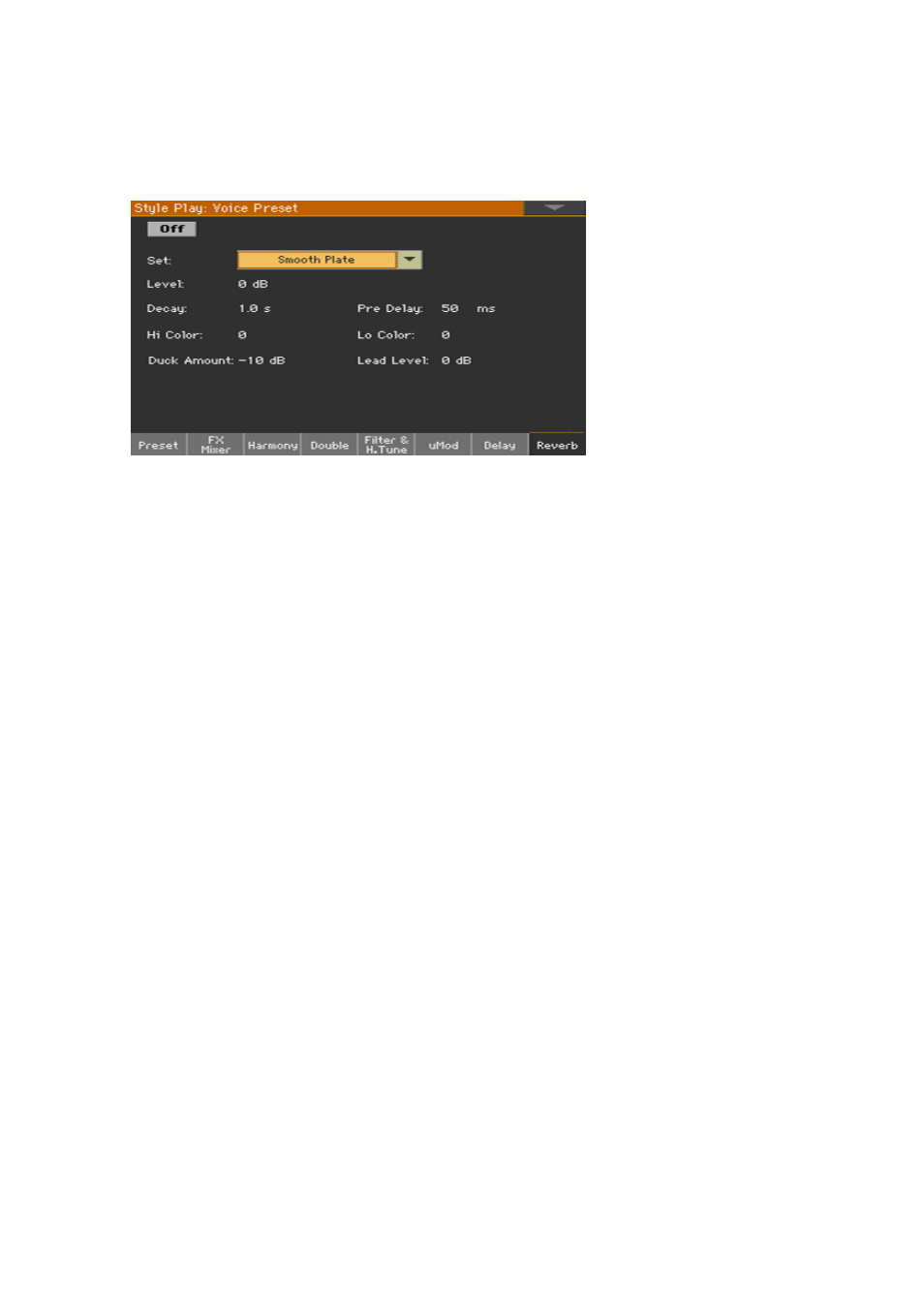Editing the reverb effect, 879 editing the reverb effect – KORG PA4X 76 User Manual
Page 883

Editing the Voice effects |879
Editing the reverb effect
While in the
Voice Preset > Reverb
page, you can program the reverb effect.
Reverb is arguably the most common vocal effect. It can add a spacious-
ness that softens the abrupt beginnings and endings of lyric phrases. Many
reverb types are meant to imitate the natural sound of spaces like churches,
clubs and halls but not all. Some reverb effects are recreations of electro-
mechanical effects meant to imitate real spaces like plates and springs.
Reverbs are made up of early reflections and the longer reverberant sounds
known as the tails. There are usually controls to control the balance of room
level and tail. Additionally, a small delay can be added between the dry voice
and the reverb signal that adds clarity by briefly separating the dry voice
from its reverb. By far the most important control for reverb is the level. A
single reverb patch can have a different result for the audience whether it is
mixed quietly or boldly in the mix.
Choosing the Reverb set
▪
Use the
Set
pop-up menu to choose settings for the Reverb block.
Adjusting the level
▪
Use the
Level
parameter to adjust the level for the Reverb effect.
Editing the Reverb parameters
▪
Use the
Decay
parameter to set the length of the reverb tail from 10 ms to 20
seconds. Note that, due to the complex nature of Reverb algorithms, a decay
time of 4 seconds may sound quiet different from one style to the next, even
when the rest of the settings are identical.
▪
Use the
Pre Delay
parameter to introduces a short (up to 100 ms) delay be-
tween the dry audio signal and the onset of reverb to help simulate larger